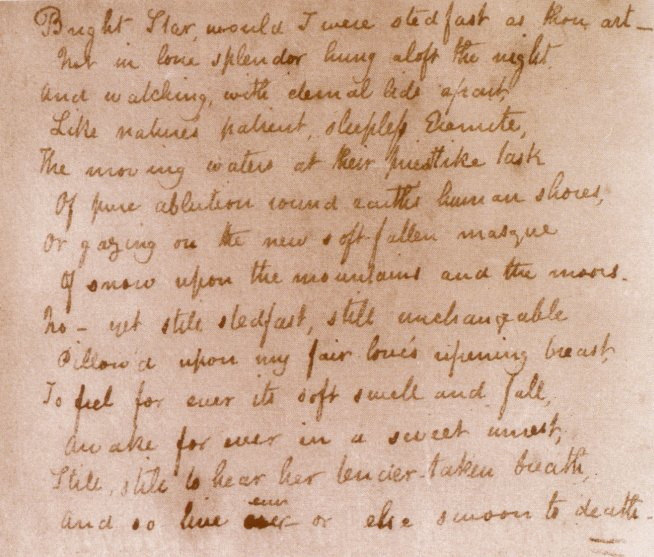Bright Star
Poem:
Bright star, would I were stedfast as thou art—
Not in lone splendour hung aloft the night
And watching, with eternal lids apart,
Like nature's patient, sleepless Eremite,
The moving waters at their priestlike task
Of pure ablution round earth's human shores,
Or gazing on the new soft-fallen mask
Of snow upon the mountains and the moors—
No—yet still stedfast, still unchangeable,
Pillow'd upon my fair love's ripening breast,
To feel for ever its soft fall and swell,
Awake for ever in a sweet unrest,
Still, still to hear her tender-taken breath,
And so live ever—or else swoon to death.
Fanny Brawne is widely known today as John Keats' fiancée and muse. They first met in 1818 and secretly married in October 1819. Unfortunately, Keats was diagnosed with TB and died in February 1821. Brawne became known to the public in 1878 when Keats was already a world-renowned poet when intimate letters between her and Keats were published.
This poem, like most of his poems about Brawne, is difficult to date and can only be accomplished by supposition. It was first published in The Plymouth and Devonport Weekly Journal in 1838, 17 years after Keats' death. The fundamental topics of the poem are eternal love, death, and nature. Bright Star is John Keats' most well-known sonnet. Furthermore, it is his most famous poem, devoted to his love Fanny Brawne.
'Bright Star' is about a person who is madly in love and wants to spend eternity in their lover's embrace, madly in love enough to feel them breathe. Keats describes the individual as desperate to communicate this desire, implying that it has not yet been achieved.
One of the poem's most important components is that the reader is not provided any information about the speaker. Instead, the poem expresses a deep sense of love for another person.
In this poem, time and place are unimportant. The effect is intentional and reflects John Keats' intense feelings for Fanny Brawne.
Type: Shakespearean Sonnet
Published: 1838











